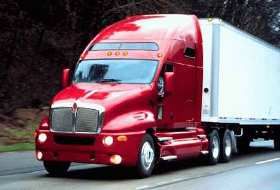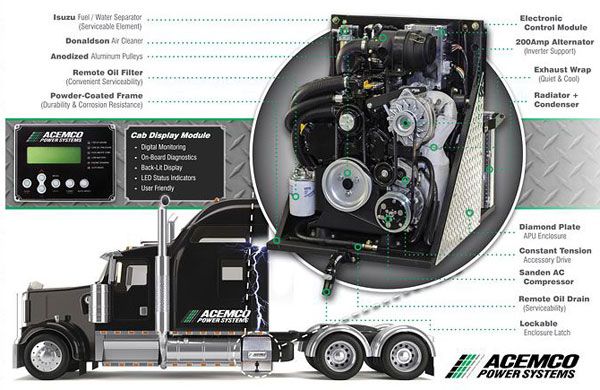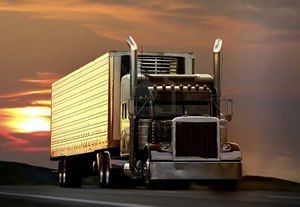MPG
Topic 16884 | Page 2

There's been several things written here that are wrong. Yes a student can be trained to get high mpg. But not the first week when they are learning to shift and grinding gears almost every time. A lot of us, not the second week. It does take time to developer this skill.
GETTING HIGH MPG: (IMO)
1. Upshift between 1000 and 1150 rpm. Exception is driving up an incline- then you have to shift at 1200 and up. When I get in a hurry, turning a corner, sometimes I overshoot- rev too high. I will change.
2. Progressive shift.
3 Drive 54 mph, or less.
4. Shut off engine instead of idling. Use APU.
5. Being a student in training, I'm sure I've left out important ingredients, such as no jack-rabbit starts.
My trainer's philosophy is the same as the companies'- as Prime Inc. Drive slow and conserve fuel. You can make good money, and save tremendous wear and tear on your truck. Driving fast does great damage to everything- both truck and trailer. Also it's safer, which besides giving the driver more time to make the correct and safe driving decisions, you save thousands of dollars on insurance and not having accidents. At my company, probably millions, because Prime has 5000+ trucks.
It's been mentioned before on here- the Super Truckers. Always driving fast, always passing. Of course when there's a huge pile up- Several times I've seen Fed Ex trucks in the pile.
If you feel I am wrong, drive by Springfield Mo, and look at the construction- a large new training center is going up, new roads being put in. Alot of opportunity there. Also the new terminal at Salt Lake City being constructed.
I have been absolutely amazed at the terminals at Pierson FL, Laredo Tx; the multiple drop yards; and also the Prime Floral division.
I understand some of the history and growth pains at Prime. It used to be Prime Expedite- drive fast, and deliver quickly. That clearly has changed.
As far as driving fast, there are times when we drive 60- such as Fed Ex loads where everything is being timed and delivery time is critical.
I have also driven 64 when we had a break down and had to meet delivery schedule. Driving 64 is an exception. Primes on-time delivery rating is 98.6%.
I have written all this and I really feel out of my league because "I am 'just' a student."
Also, my trainer is always in the Companies' top .05% for drivers for MPG. I haven't mentioned his paycheck reflects it. And the 7 diamond ring for 7 years of service. And his hard work. And the 72% of revenue he gets.
I'm looking forward to your responses.
Terminal:
A facility where trucking companies operate out of, or their "home base" if you will. A lot of major companies have multiple terminals around the country which usually consist of the main office building, a drop lot for trailers, and sometimes a repair shop and wash facilities.
APU:
Auxiliary Power Unit
On tractor trailers, and APU is a small diesel engine that powers a heat and air conditioning unit while charging the truck's main batteries at the same time. This allows the driver to remain comfortable in the cab and have access to electric power without running the main truck engine.
Having an APU helps save money in fuel costs and saves wear and tear on the main engine, though they tend to be expensive to install and maintain. Therefore only a very small percentage of the trucks on the road today come equipped with an APU.

Driving 54 is not always possible when solo. Its not usually possible for me at all. I have had loads where I had to lock it in at 62 mph and every minute counts. You can't drive 600 miles a day doing 54. I've rolled in with less than 20 min on my clock plenty going 62 the while way. Ive had to race from the receiver to the next shipper and made it with minutes to spare. As a solo driver this happens much more often than you want.,...if u r good. I am kept rolling when other drivers are sitting. I get the fuel bonus every week and it is usually $50-$100. But I make more from the added loads than worrying about shifting for fuel.
Students "can" be taught but most have so much to learn and different people learn at different speeds. The whole learning process is stressful and prime wants to tweak you for the fuel mileage after some of that stress is relieved. As I said in my first comment, this is all covered in the optional reefer class when u upgrade to solo. Keep in mind too that not everyone has a great or informative trainer. So worrying about the fuel mileage when you are concerned with other things can just add more stress. Plus....you aren't getting paid the fuel bonus as trainees. And some trainers have no idea what any of this means so all they want is for you to drive fast so you can pick up the next load.
Prime actually wants you to ALWAYS drive about 1100 even on hills "if you have to lug the engine a little so be it, you will make it up the hill".
You will see in the class all of the info they have on your truck. Your avg speed, how many hours you drive at each speed, your idle percentage, the mpg, how long you stay in cruise control (which also improves mpg), how long you stay in each gear, what RPM you shift and how long you stay in it.
I've said in other posts that I called FM once a month to ask how I could improve. I suggest everyone do it the first couple of months.
I'm curious what you found wrong with the previous statements and how the trainers paycheck reflects the mpg? As Rick stated, lease ops don't get the fuel bonuses. Is there something else he gets I don't know about?
Shipper:
The customer who is shipping the freight. This is where the driver will pick up a load and then deliver it to the receiver or consignee.
Fm:
Dispatcher, Fleet Manager, Driver Manager
The primary person a driver communicates with at his/her company. A dispatcher can play many roles, depending on the company's structure. Dispatchers may assign freight, file requests for home time, relay messages between the driver and management, inform customer service of any delays, change appointment times, and report information to the load planners.Reefer:
A refrigerated trailer.
I agree that there are more important things to worry about than mpg when you're learning to control the truck.
I know when I was there, Prime harped on mpg a lot, both when I was company and when I was leasing. It's probably a better deal for reefer drivers, since the mpg goals to make bonus are out of reach for company flatbed drivers. I got the bonus once as a company driver, and I never got better (longer) loads for having good mpg.
And as a lease op, the fuel surcharge goes down as fuel prices go down, so you're never making any money by improving your mpg; rather, you're reducing the cost side of the equation. It's still a net cost. Sure, you keep more of what you earn, but one extra load a week by getting a long load off a day early is worth more than the fuel savings. I've done the math on it with real examples.
Not all companies bother their drivers about mpg. I'm sure someone somewhere is looking at it, but at my current company I have never heard one word about it. I've heard they might say something if your idle percentage is too high, but that's about it.
When I got this truck, it had over 300,000 miles on it. I was curious and did the math with the on-board data. The truck had averaged 6.5 mpg at an average speed of 48.9 mph during those miles. I just redid it after 60,000 miles and it's still 6.5 mpg at an average of 49.1 mph. (I probably idle less than the previous driver.) I run it to the governor and drive as many hours as I can, and I earn a lot more than I was making previously. The bonuses are based on safe, on-time delivery and are paid quarterly. I've made more on that than any fuel bonus I've gotten.
So, it's partly the company's philosophy, it's partly the load and terrain, and it's partly the truck and its aerodynamics that will determine your mpg. But again, first things first. Make sure you can control the truck in every situation, make sure you learn about navigating and maximizing hours of service and living on the road and all the little things you can about the shippers and receivers, and then somewhere down the list is mpg. Or not, depending on the company.
Shipper:
The customer who is shipping the freight. This is where the driver will pick up a load and then deliver it to the receiver or consignee.
Reefer:
A refrigerated trailer.
HOS:
Hours Of Service
HOS refers to the logbook hours of service regulations.I'm curious what you found wrong with the previous statements and how the trainers paycheck reflects the mpg? As Rick stated, lease ops don't get the fuel bonuses. Is there something else he gets I don't know about?
What you have to look at in your settlement - is what you are burning/paying in fuel costs. I'm not even factoring in the FSA - because this is a variable that gets paid by dispatched mile - regardless of what your FUEL EFFICIENCY IS. So you make the same FSA if you're doing 6MPG, as you would at 10MPG. It's just COSTING the lease op a LOT MORE IN HIS OVERHEAD - by not running in a fuel efficient manner. It STILL COSTS YOU th $900 a week to lease the truck - whether you are running fuel efficient or not.
Does Prime have any fuel savings systems and if so, how much of the savings does the contractor get? Prime's Innovative "Fuel Surcharge" program protects you - the independent contractor- from fuel market fluctuations. Fuel surcharge is based on Prime’s fuel cost minus $1.20 divided by 6 mpg to come up with the weekly amount paid in fuel surcharge. The fuel surcharge is paid for all authorized dispatch miles. Don't let the high cost of fuel keep you off the road. Partner with Prime and keep your fuel costs down.
Again - if you look at the previous example I posted - based solely on the difference of fuel consumed and the out-of-pocket-expense to the LeaseOp - it puts SIGNIFICANT $$'s NOT SPENT into his wallet.
As a company/company driver - using my previous example. If the company gives you a 5 cpm fuel bonus on a 1,000 mile run - and the difference of 2MPG saves the COMPANY $62 - they're still coming out $12 ahead of the game. Multiply that by 1,000 trucks - and that's BIG MONEY.
It still comes down to bottom line - both for the company, the company driver and most important - the LEASE OP (who pays for all his overhead). A SMART BUSINESS OWNER will reduce his overhead as much as possible. It's still my belief (in this particular case) that you can put more $$ in your pocket by running efficiently - than by getting another 100 or so miles driven and running LESS EFFICIENTLY.
YMMV (pun intended)
Rick
CPM:
Cents Per Mile
Drivers are often paid by the mile and it's given in cents per mile, or cpm.

I'm rolling OTR in a 2016 Kenworth T680 10-speed automatic, with a PACCAR engine.
With no load in the trailer, my current truck can manage 13+ MPG. But I obviously don't get a lot of miles like that.
Crossing long flat areas, I can get up to 11 MPG with 40+k in the box. That's pretty rare though. Starting the truck and getting into top gear takes a significant chunk of fuel, and then you have to average it for a long time to get to 11MPG.
However, 10 MPG is doable in the flats, and I have managed it a couple times over a full days driving.
When crossing the Western mountains, I typically average in the high 6 to low 7's. Crossing the Eastern mountains typically averages in the high 7's.
Hilly country runs in the 8 to 9's depending on how steep the hills are. My overall average for the last 20k miles is 8.6 MPG.
I just finished a run from Denver, CO to Dodge City, KS with no load, then from Dodge City to Charlotte, NC, and then to Newberry, SC. 1831 miles at an average of 9 MPG.
OTR:
Over The Road
OTR driving normally means you'll be hauling freight to various customers throughout your company's hauling region. It often entails being gone from home for two to three weeks at a time.

Oh, I'll also mention that my truck gets better fuel mileage at 62 MPH than at 55. The reason? Gearing.
At 55 MPH, the truck simply will not stay in 10th gear. If it's super flat, it will stay in 10th at 55 MPH, at @900 RPM, but a weak crosswind will drop it to 9th. Most long flats in the US have lots of wind. California in the central valleys is an exception. When in Cali, I still have to run the truck at 57 to keep it in 10th, most places.
At 62 MPH, 10th gear is about 1050 RPM, and it can keep that up on low, long hills, even with fair headwinds.
The automatic transmission also does what most companies tell you not to do. It goes into neutral when rolling hills, until you get to a few miles per hour over your cruise setting, then it drops back into 10th gear, and will downshift to 9th or even 8th depending on the speed of the truck and the slope of the hill - yes, it detects the slope of the road.
DWI:
Driving While Intoxicated
New Reply:
New! Check out our help videos for a better understanding of our forum features

















Preview:
This topic has the following tags:
Prime Inc Advice For New Truck Drivers Automatic Transmissions Driver Responsibilities The Economy And Politics Truck Equipment







 TT On Facebook
TT On Facebook
Another thing they discuss in class is the idle time and keeping up maintenance on truck and APU.
Prime wants idle time to be 3%/or less. My fleet avg is 7%....but my truck was less than 1.5%. How? I turn the truck off every time I stop, slide tandems , wait at fuel island. Some say it will damage the starter. Prime doesn't seem to care. I got a bigger bonus for it last qtr. I guess they figure my truck has enough miles it will be sold soon so theybdont Carr about starter.
The fuel filters being changed properly help too. APUs have filters but the Petro I went for service didn't have them. Now I carry the filters with me ;)
Tandems:
Tandem Axles
A set of axles spaced close together, legally defined as more than 40 and less than 96 inches apart by the USDOT. Drivers tend to refer to the tandem axles on their trailer as just "tandems". You might hear a driver say, "I'm 400 pounds overweight on my tandems", referring to his trailer tandems, not his tractor tandems. Tractor tandems are generally just referred to as "drives" which is short for "drive axles".
Tandem:
Tandem Axles
A set of axles spaced close together, legally defined as more than 40 and less than 96 inches apart by the USDOT. Drivers tend to refer to the tandem axles on their trailer as just "tandems". You might hear a driver say, "I'm 400 pounds overweight on my tandems", referring to his trailer tandems, not his tractor tandems. Tractor tandems are generally just referred to as "drives" which is short for "drive axles".
APU:
Auxiliary Power Unit
On tractor trailers, and APU is a small diesel engine that powers a heat and air conditioning unit while charging the truck's main batteries at the same time. This allows the driver to remain comfortable in the cab and have access to electric power without running the main truck engine.
Having an APU helps save money in fuel costs and saves wear and tear on the main engine, though they tend to be expensive to install and maintain. Therefore only a very small percentage of the trucks on the road today come equipped with an APU.
APUs:
Auxiliary Power Unit
On tractor trailers, and APU is a small diesel engine that powers a heat and air conditioning unit while charging the truck's main batteries at the same time. This allows the driver to remain comfortable in the cab and have access to electric power without running the main truck engine.
Having an APU helps save money in fuel costs and saves wear and tear on the main engine, though they tend to be expensive to install and maintain. Therefore only a very small percentage of the trucks on the road today come equipped with an APU.